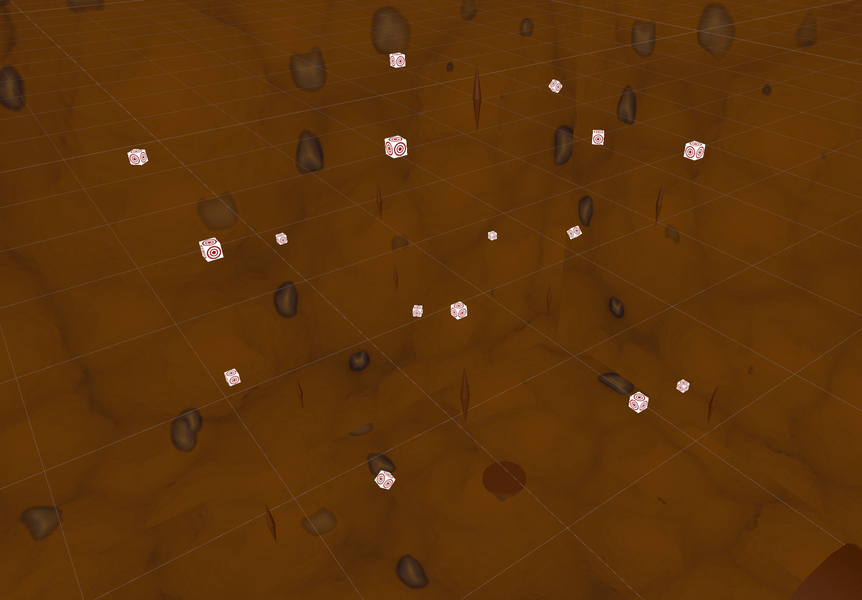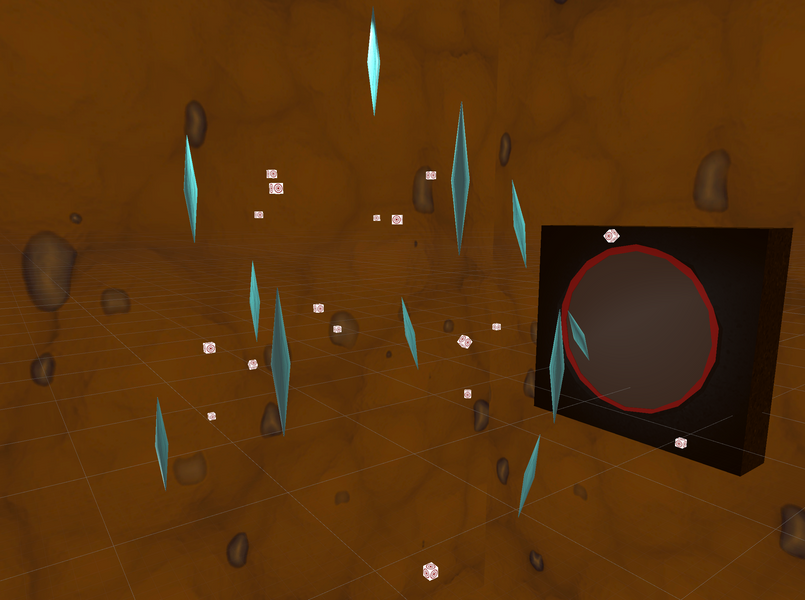WORM PUNK
Co-Producer, Level Designer, VFX artist, QA Tester, Narrative Designer, Concept artist
Responsibilities:
-
Designing and building the geometry for the main menu and the tutorial level.
-
Creating shaders using Shader Graph for moving textures, unique patterns, and a cel shader.
-
Creating particle effects for the wormhole.
-
Creating simple animations and setting them to work with triggers using code.
-
Working as co-producer to help organize tasks, progress, and guide team members, including management of burndown sheets.
-
Writing the playtester feedback survey and organizing response data.
-
Creating background lore and story elements for the game.
Design Process
Design
-
When creating the tutorial, I had to keep in mind the large space needed for players to fly around in. So using Realtime CSG I started with a long tube with a high ceiling, perfect for building up speed, and placed obstacles for players to avoid.
-
Additionally I cut out a section using negative geometry to create a half-pipe, providing a chance to practice with the ground chainsaw movement, and after that was a section without any ground, only floating targets to practice using the hookshot.
-
The first iteration of the tutorial was mostly focused on letting new players practice moving in the game, but over time I placed targets at the beginning and the end of the level to let players practicing their shooting skills as well, and gates with challenges and instructions attached, to teach players that don’t otherwise know the controls, and make sure they understand them.
Production & VFX
Production
-
One of the first things I did as producer was set up a burndown sheet for the artists and programmers, our two largest teams. I entered each name and initials, set dates at 5 day intervals before the end of the sprint, and made separate pages for each sprint as well. The only thing the others had to do was write the task, their initials, and the estimated hours, and the sheet itself took care of the rest.
-
Occasionally I had to create more rows for more tasks to be entered, or correct a mistake when someone placed a number in the wrong spot, so upkeep the burndown sheets was a persistent responsibility of mine.
-
The lead producer also asked me to go around to each team member at the end of each week and ask them where we were so we could assess our progress so far and what to prioritize next. So I came up with a few subjects to ask about each week, such as the state of the level, networking, bugs, and what the art team was up to. Doing the rounds each week became really efficient, and allowed us to accurately gauge the progress of the game.
-
For the feedback survey, I started with questions about moving with each of the weapons, attacking with them, the level itself, and what else they wanted to see in the game. Before the survey even went out to playtesters, I revised it to remove a lot of the redundancy as some questions overlapped, and changed others to be choose a number out of 10, instead of the short answer form they were before.
-
Then after the first round of feedback we received, we heavily revised it again, this time focusing on one concept we did not have in the first round, that being “What did you not like?” We found that if asked “Did you like this feature?” or “What did you think of this feature?” most playtesters would say “it was good” and give no further explanation. So I changed most of the questions to be worded around asking what their negative opinions were, or how they thought the game could be improved, and then we saw a lot more feedback about how we could improve our game, instead of just that the tester liked it.
Visual Effects
-
For the cel shader, it took a lot of experimenting to find something that worked well for the purposes we wanted it to. Once the HLSL was sorted and working, I still had to find a way to ramp the colors to achieve the desired layered effect. To do this I used a gradient with slightly different shades of white and the blending turned down to zero to make the transition a hard line, then I attached the gradient to the same node that controls the direction of the shadow, so now the shader had several layers of darkening colors. I used white for the gradient so that the color variable could be changed in game, letting us easily have 7 colors the players can choose and change at their leisure.


















